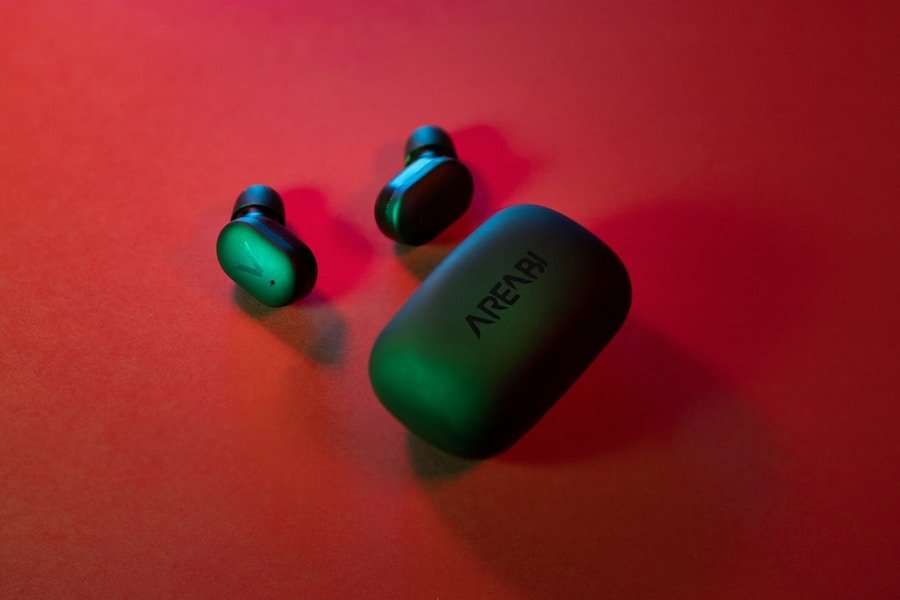In recent years, the fitness industry has witnessed a significant surge in the popularity of high-tech fitness equipment. The proliferation of smartwatches, fitness trackers, virtual reality headsets, and AI-powered machines has transformed the way people approach fitness and training. This trend is driven by the growing demand for personalized and efficient workout experiences.
Individuals are no longer content with traditional gym equipment and generic workout routines, instead seeking gear that provides real-time feedback, tracks progress, and adapts to their unique needs. Consequently, the fitness industry has experienced a rapid development and adoption of high-tech equipment designed to enhance the overall workout experience. The rise of high-tech fitness gear is also attributed to advancements in technology and the increasing popularity of wearable devices.
Smartwatches and fitness trackers have become widespread, enabling users to monitor their heart rate, track their daily steps, and analyze their sleep patterns. These devices have not only simplified the process of tracking fitness goals but have also paved the way for more advanced forms of high-tech gear. For instance, virtual reality headsets have gained popularity in the fitness world, offering users an immersive and interactive platform for virtual workouts and training sessions.
As technology continues to advance, it is likely that the market will see even more innovative and sophisticated high-tech fitness gear, further revolutionizing the way people approach fitness and training.
Key Takeaways
- High-tech fitness gear is revolutionizing the way people approach their fitness routines and training.
- Wearable technology is playing a significant role in tracking and monitoring fitness progress, making it easier for individuals to stay on top of their goals.
- Virtual reality is changing the game by providing immersive and interactive fitness training experiences, making workouts more engaging and effective.
- Artificial intelligence is being integrated into fitness equipment to provide personalized training programs and real-time feedback, enhancing the overall fitness experience.
- Data and analytics are playing a crucial role in high-tech fitness gear, providing valuable insights and information to help individuals optimize their performance and achieve their fitness goals.
How Wearable Technology is Revolutionizing Fitness
The Rise of Wearable Devices
From smartwatches and fitness trackers to smart clothing and accessories, wearable technology has made it easier than ever for people to monitor their fitness progress and stay on top of their health goals. These devices provide real-time feedback on everything from heart rate and calorie burn to sleep quality and stress levels, empowering users to make more informed decisions about their health and wellness.
Personalized Fitness Routines
In addition to tracking physical activity, wearable technology has also made it possible for users to access personalized workout routines and training programs, tailored to their individual needs and goals. One of the most significant ways in which wearable technology is revolutionizing fitness is through its ability to promote accountability and motivation. By providing users with real-time data on their fitness progress, wearable devices encourage individuals to stay active and make healthier choices throughout the day.
A Sense of Community and Support
Many devices also offer social features that allow users to connect with friends and family, share their achievements, and compete in challenges, fostering a sense of community and support. As wearable technology continues to advance, we can expect to see even more sophisticated features that will further enhance the overall fitness experience, making it easier for people to stay motivated and committed to their health and wellness goals.
The Impact of Virtual Reality on Fitness Training
Virtual reality (VR) has emerged as a game-changer in the world of fitness training, offering users an immersive and interactive way to engage in workouts and training sessions. VR technology has made it possible for people to escape the confines of traditional gym settings and explore new environments and experiences that can enhance their overall fitness journey. Whether it’s taking a virtual hike through the mountains or participating in a high-intensity interval training session in a virtual studio, VR has opened up a world of possibilities for fitness enthusiasts.
This technology not only makes workouts more engaging and enjoyable but also provides users with a unique way to challenge themselves and push their limits. In addition to providing a more immersive workout experience, VR has also been shown to have a positive impact on motivation and adherence to exercise regimens. By creating a sense of presence and immersion, VR can help users stay focused and engaged during their workouts, ultimately leading to better results.
Furthermore, VR technology has the potential to make fitness more accessible to a wider audience, including those who may have physical limitations or mobility issues. As VR continues to evolve and become more mainstream, we can expect to see even more innovative applications that will further enhance the impact of this technology on fitness training.
Integrating Artificial Intelligence into Fitness Equipment
| High-Tech Fitness Gear | Benefits |
|---|---|
| Smart Watches | Tracks heart rate, steps, and calories burned |
| Smart Clothing | Monitors body movements and provides real-time feedback |
| Virtual Reality Fitness | Offers immersive workout experiences |
| Smart Scales | Measures weight, body fat percentage, and muscle mass |
Artificial intelligence (AI) has become increasingly integrated into fitness equipment, revolutionizing the way people approach their workouts and training regimens. AI-powered equipment is designed to adapt to the individual needs and goals of users, providing personalized feedback and guidance throughout their workouts. Whether it’s adjusting resistance levels on a stationary bike or providing real-time coaching during a strength training session, AI has the potential to enhance the overall workout experience and help users achieve better results.
This level of personalization and customization is unprecedented in the fitness industry, offering users a more tailored and effective approach to their health and wellness goals. Furthermore, AI-powered equipment has the ability to analyze data from workouts and provide insights that can help users optimize their training regimens. By tracking performance metrics such as heart rate, power output, and range of motion, AI can identify patterns and trends that can inform future workouts and training programs.
This level of data-driven analysis can help users make more informed decisions about their fitness goals and ultimately lead to better outcomes. As AI continues to advance, we can expect to see even more sophisticated applications in fitness equipment that will further enhance the overall workout experience.
The Role of Data and Analytics in High-Tech Fitness Gear
Data and analytics play a crucial role in high-tech fitness gear, providing users with valuable insights into their health and wellness goals. Whether it’s tracking physical activity, monitoring heart rate variability, or analyzing sleep patterns, data-driven insights can help users make more informed decisions about their fitness regimens. High-tech gear is designed to collect a wide range of data points that can be used to assess performance, identify areas for improvement, and track progress over time.
This level of data collection and analysis is unprecedented in the fitness industry, offering users a more comprehensive understanding of their overall health and wellness. Furthermore, data and analytics can be used to personalize workout routines and training programs based on individual needs and goals. By leveraging data from high-tech gear, users can access tailored recommendations for exercise intensity, duration, and frequency that are designed to optimize their performance and results.
This level of personalization is essential for helping users achieve their fitness goals in a way that is sustainable and effective. As data collection and analytics continue to advance, we can expect to see even more sophisticated applications in high-tech fitness gear that will further enhance the role of data in shaping the future of fitness.
Enhancing Performance with Smart Clothing and Accessories
The Rise of Smart Clothing and Accessories in Fitness Smart clothing and accessories have become an essential part of high-tech fitness gear, offering users a more integrated and seamless approach to monitoring their health and wellness goals. From smart shirts that track heart rate to sensor-equipped shoes that analyze gait patterns, smart clothing and accessories provide users with real-time feedback on their physical activity and performance.
Comfort and Practicality
Furthermore, smart clothing and accessories are designed to be comfortable and practical for everyday use, making them an accessible option for individuals looking to enhance their fitness journey. In addition to tracking physical activity, smart clothing and accessories can also provide insights into other aspects of health such as posture, movement patterns, and muscle activation.
Optimizing Performance and Preventing Injury
By leveraging this data, users can gain a better understanding of how their body responds to different types of exercise and make adjustments as needed. This level of insight is invaluable for optimizing performance and preventing injury during workouts.
The Future of Smart Clothing and Accessories
As smart clothing and accessories continue to evolve, we can expect to see even more innovative applications that will further enhance the overall fitness experience.
The Future of Fitness: Exploring the Potential of High-Tech Gear
The future of fitness is bright with the potential of high-tech gear continuing to revolutionize the way people approach their health and wellness goals. As technology continues to advance, we can expect to see even more innovative applications that will further enhance the overall fitness experience. From advancements in virtual reality that offer more immersive workout experiences to AI-powered equipment that provides personalized coaching and feedback, the possibilities for high-tech gear are endless.
Furthermore, as data collection and analytics continue to evolve, we can expect to see even more sophisticated insights that will help users make more informed decisions about their fitness regimens. One area with significant potential for growth is the integration of high-tech gear into home workout environments. With the rise of remote work and virtual training options, there is an increasing demand for high-tech gear that can provide users with an engaging and effective workout experience from the comfort of their own homes.
This shift towards home-based fitness solutions presents an opportunity for high-tech gear to become even more accessible and convenient for a wider audience. As technology continues to evolve, we can expect to see even more innovative applications that will further enhance the future of home-based fitness. In conclusion, high-tech fitness gear is changing the game by revolutionizing the way people approach their health and wellness goals.
From wearable technology that provides real-time feedback on physical activity to virtual reality headsets that offer immersive workout experiences, high-tech gear has opened up a world of possibilities for fitness enthusiasts. As technology continues to advance, we can expect to see even more innovative applications that will further enhance the overall fitness experience. The future of fitness is bright with the potential of high-tech gear continuing to revolutionize the way people approach their health and wellness goals.
FAQs
What is high-tech fitness gear?
High-tech fitness gear refers to advanced equipment and devices designed to enhance and track physical activity and performance. This can include smartwatches, fitness trackers, heart rate monitors, smart clothing, and virtual reality fitness systems.
How is high-tech fitness gear changing the fitness industry?
High-tech fitness gear is revolutionizing the fitness industry by providing users with real-time data and insights into their workouts, allowing for more personalized and effective training. It also offers interactive and immersive experiences, making workouts more engaging and enjoyable.
What are some examples of high-tech fitness gear?
Examples of high-tech fitness gear include smartwatches like the Apple Watch and Fitbit, fitness trackers such as the Garmin Vivosmart and Xiaomi Mi Band, heart rate monitors like the Polar H10, smart clothing from brands like Athos and Nadi X, and virtual reality fitness systems like the Oculus Quest and Holodia.
How does high-tech fitness gear benefit users?
High-tech fitness gear benefits users by providing them with accurate data on their physical activity, heart rate, and other vital signs, allowing them to track their progress and set achievable fitness goals. It also offers personalized training programs, real-time feedback, and interactive features to make workouts more effective and enjoyable.














